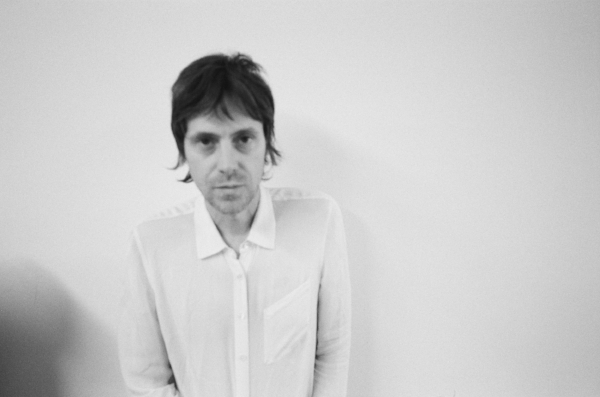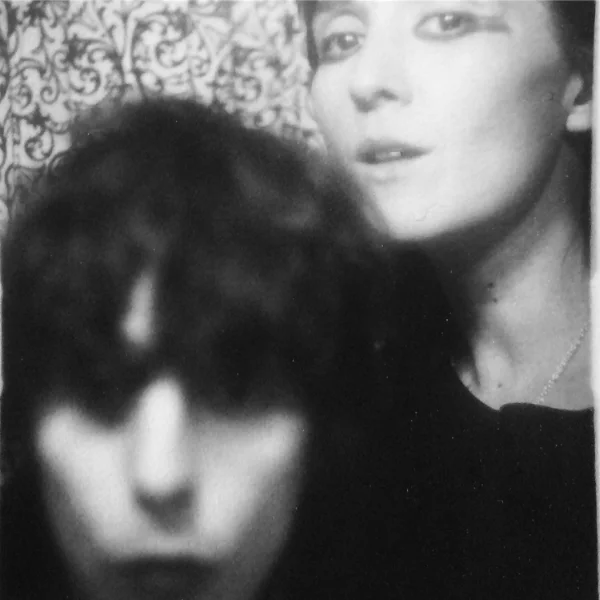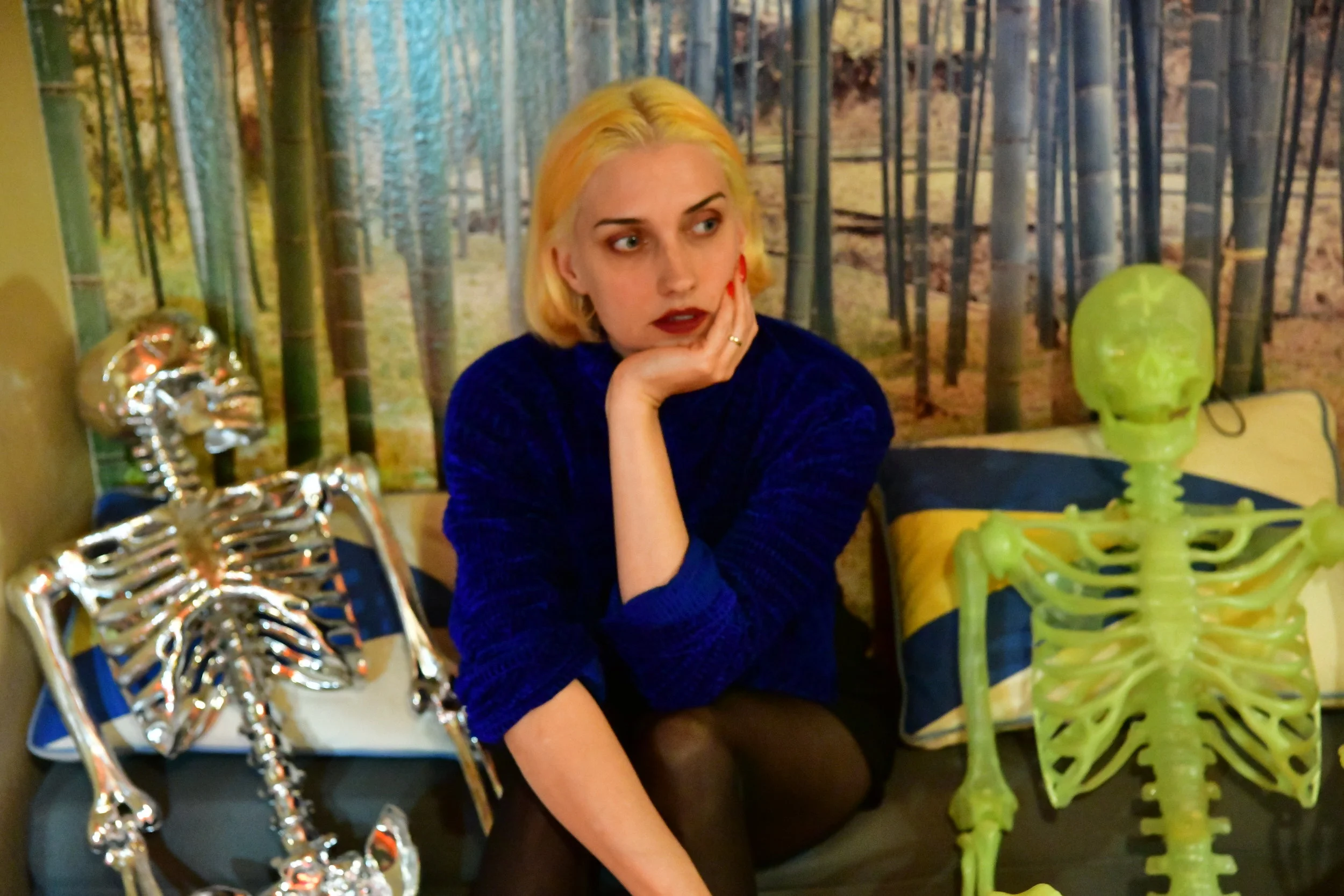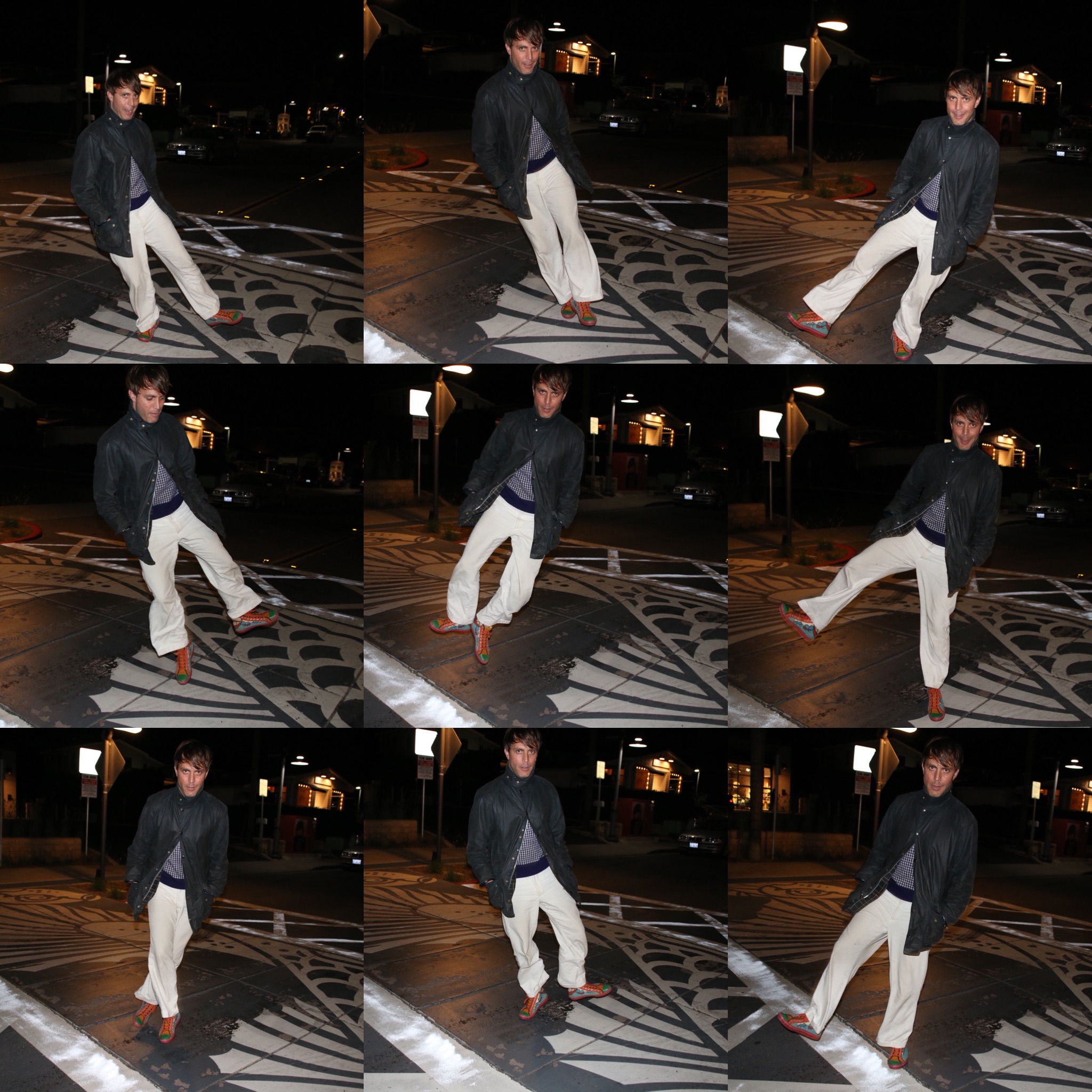Tim Presley Talks White Fence, DRINKS, Collaborations, and More
Tim Presley is one of our favorite artists here at WMF for a host of reasons: his steady quality musical output under the White Fence moniker, the significant role he played in a crucial era of post-punk mainstay The Fall, and his contributions as one half of DRINKS are three of those reasons, but there are even more topics we’ve been eager to cover with Tim. Curious about his diverse musical endeavors as well as his upcoming 2019 album, we recently had to the pleasure of conversing with Tim about these subjects and others, including his visual art, past collaborations with Jack Name and Ty Segall, and his return to simple, melodic songwriting.
Bobby Weirdo: You’re back in the States now after playing some shows abroad.
Tim Presley: I’m in San Francisco -- yeah, I was gone for a little bit.
BW: That was for DRINKS, right?
TM: I did a Ty Segall/White Fence tour, and that ended [at Desert Daze], where I saw you last. Cate [Le Bon] rented a place out in the desert to record, and I stayed there for a couple weeks. Then we flew out to the UK to do the DRINKS tour.
BW: Since the last time we spoke, it’s been announced that you have a new solo album coming out January 25 on Drag City.
TP: Yes, I Have to Feed Larry’s Hawk.
BW: I’ve heard “Lorelei”, and there’s a track called “Fog City” in the track listing. Is that a reference to San Francisco?
TP: Yes -- kind of. San Francisco is known as that, and there was a café here years and years ago called that, but it's only a vague reference to it. It's more about the blurriness in one’s brain trying to battle addiction, which here takes place in San Francisco.
BW: Are you from San Francisco originally?
TP: I’m technically from San Mateo, which is about twenty minutes south of San Francisco. But as soon as I was old enough to leave the nest, I moved to San Francisco.
BW: In places all across the world these days -- and especially in a city like San Francisco -- there is an ongoing challenge and discussion around how artists can live in cities that inspire and have resources, but are affordable enough to allow artists to live and create. What is your experience as an artist in San Francisco these days in that regard?
TP: I was fortunate enough to have friends of over twenty years who still live here, and I was able to get a rent-controlled apartment. But otherwise, I don’t think I’d be able to live here. It’s pretty dramatic -- there was a mass exodus a couple years ago of everyone moving to L.A., and now I hear it’s becoming pretty expensive to find a place there.
San Francisco is in a strange moment I think. Rent is real high, and there aren’t clubs like there were even ten years ago, where there were a lot of DIY places to play. It’s tricky.
BW: You are going to be a musician in residence at Marfa Myths in 2019, along with Drugdealer. What does that entail? Will there be a collaborative EP from the two of you that comes out of that?
TP: That’s the idea. I was there last year when it was Cate and Bradford [Cox]. It’s a collaborative effort, and hopefully good music comes out of it. I think it’s interesting, though, for people who don’t know each other that well to do it -- being almost forced to be in a room together and make music. It should be interesting.
BW: You mention Cate, who is in DRINKS with you. She’s going to be a woodworker in residence. Is that what it sounds like -- she’ll be working as an artist with wood?
TP: She took a year off to get the skills to learn how to do all that – without nails, using joints.
BW: And there are so many connections here -- you mentioned Bradley Cox, and Cate produced the upcoming Deerhunter album, Why Hasn’t Everything Already Disappeared, right?
TP: Yeah, that’s finished.
BW: Going back to growing up in San Francisco -- I think a lot of long-time fans might associate you with L.A. Were you spending a lot of time here with Darker My Love?
TP: I went to art school in San Francisco, and then I moved to L.A. in 2003. I lived in Echo Park for eleven years. So L.A. is the place where I did most of my stuff.
BW: In 2006 you played on The Fall’s Reformation Post TLC, and Rob from Darker My Love is also on that album.
TP: Yeah, it was us and this guy Orpheo [McCord].
BW: That ended up being a successful collaboration, and that lineup of The Fall got high praise from Mark E. Smith. What do you think it was it about the younger, American band that worked so well with Mark E. Smith?
TP: We were just hungry, and I love The Fall and have the utmost respect for The Fall. Essentially, I just wanted to be good for him, and for his wife at the time, Elena [Poulou]. Both Rob and I were pretty serious about music -- we weren’t into the pitfalls of being lazy and Mötley Crüe about it. We just wanted to play well and appease Mark, and he really liked that. We were able to have a really good relationship with him.
When he started using the UK band after us, I got a call from someone doing a book called The Fallen, about ex-members of The Fall. Out of respect, I called Mark. He said, “Don’t talk to them, mate. You’re not an ex member – fuck them!” So I was pretty happy that he considered me part of The Fall family, and not just some ex-member.
He was good to me and Rob, and would send us Christmas and birthday cards even after we did our stint with him. And I continued to write songs for some later Fall records. So we still felt like we were a part of it, even though we weren’t [still] playing with the live band.
BW: Going back to your earlier days in San Francisco, you mentioned going to art school there. What school as that?
TP: SFAI [San Francisco Art Institute].
BW: Does the artwork on your releases come from that training and background? Were you doing painting and drawing there, or what in particular as far as a disciplines and media?
TP: I was trying to figure it out in school -- I didn’t know who I was or what I was doing. Art school was such a shock to my system. I was conditioned from [earlier] school to get there at eight and leave at three. But when I got to art school they didn’t give a shit if you showed up or not. I abused that luxury and would sleep in and paint at home. But then I realized I was wasting a ton of money and time, so I wised up and began to practice art with the school, and not at home. I studied printmaking to know a craft.
BW: Is that a skill you still use today?
TP: Not really. The thing I use from it today is the computer, for art. I learned how to do a lot of layers and things with Photoshop for printmaking, and then I just switched that over to graphic design early on to do odd jobs and make money.
So art school was too much too soon for me. And then I finally matured and realized that I could get something out of it instead of kicking against it.
BW: What was your connection to The Distillers when you did the Coral Fang cover for them?
TP: That was actually the genesis of me going to L.A. Just to backpedal, I was in a hardcore band called The Nerve Agents. We were kind of tight with Rancid, who were a local hero punk band that made it big. Tim Armstrong’s wife was Brody [Dalle], who had the band The Distillers. We became friends and they would open for us. Then they blew up and two of our members joined their band. So we were friends, and Brody liked my art. She commissioned me to do the art for the Coral Fang album.
BW: You make music as White Fence, Tim Presley, as part of DRINKS, and now as Tim Presley’s White Fence. Sometimes I hear elements of DRINKS on the Wink album, or elements of one of your projects surfacing in another, but there is still the White Fence distinction. How does it work to do something as White Fence even when you’re working with different artists like Jack Name or Ty Segall? And when do you know that music you’re working on isn’t White Fence, and is something else?
TP: That’s tricky. Throughout 2008-2014, I was just completely hermetic – I didn’t eat, I
didn’t sleep. All I cared about was recording music. And all that ended up being White
Fence albums. I had 300-500 songs, because all I did was write and record music at
home. I would shut out everything, for better or for worse. And I worked in so many
different styles as well -- being open and interested in every style known to man & woman.
With Jack, it was fun because he opened my mind in a very musical -- but experimental -- way, and the same with Cate. She really tapped into a part of me that I'd been longing to do, and explore. But then there’s Ty, which speaks more to my fundamental rock and roll primal instincts... body or mind. He lives, loves, and nurtures the genuine rock and roll animal urges.
I spent those years figuring stuff out -- writing songs, experimenting with recording, with sounds and texture. [When] I did the Wink album, Cate produced that. I just showed her fifty songs that I recorded in my room, and she helped me pick out the ones [for the album]. So if it ever sounds like DRINKS, there’s good reason, because Cate heard something and said, “Hey, we could work with that.”
BW: How did you and Jack connect in the first place?
TP: I was trying to start up Darker My Love in 2003, and I was doing it with Jared Everett, who was really good friends with Jack. Jack, Jared, and Rob [Barbato] lived together, and I think Emmett Kelly was living with them for a minute, too. So I was always hanging out with them, and was enamored with Jack’s musical mind -- it was so different from mine. I wanted to learn what he had to say musically, because it is so interesting. He’s technically very good as well.
Jack had his own music going. It was great -- we’d do these nights where we would all learn his songs. He’d get a group of four to seven people --who didn’t necessarily know each other that well -- in a room, and we’d all service the song, learning the parts.
It was some of the best times in L.A. I’ve ever had. One week it could be just four of us, and the next time it would be a full eight-piece band with Zumi doing horns, there was crazy synths, and we’d play a show. We all just loved playing music and loved Jack and his songs. It was really special, and this was years before he had his Jack Name records out. It was music for music’s sake, and Jack was our composer.
BW: You’re credited as playing guitar, amps, and backing vocals on Rado’s 2013 solo album, Law and Order. What does it mean that you were playing amplifiers?
TP: I think I twiddled knobs, like Lee Scratch Perry would or something -- fucking with effects while someone was playing.
BW: And is that what led to your contributions to the …And Star Power Foxygen album?
TP: Yeah. Rado interviewed me for something, because I guess he was a White Fence fan. Foxygen were probably teenagers at that point. So that’s how we met, and then we worked together for a bit.
BW: Nick Murray has played drums with DRINKS, right?
TP: He played on the first album, Hermits on Holiday.
BW: He recently told Suzy Weirdo and me that he wasn’t really clear on what was going on during the recording process – sometimes unaware if he was actually even laying down takes or not.
TP: Ha! That was kind of the point with Cate and me doing that. I don’t think that made
Nick very happy. He is such a good drummer, but he likes to know what he’s getting into,
I think. But because Nick is such a good drummer, we wanted to see what would happen
if we gave him the luxury to improvise on the spot -- to give him an idea, and then just let
him go, because we both knew how good he is.
We thought it'd be interesting, but I don’t know if he loved that idea. You know, telling a good drummer to play like a five year old…he wasn’t too stoked on that...haha.
BW: Well -- however the process worked -- the results were great. And I wanted to talk a bit about the process for those songs. There’s an ever-present juxtaposition of simplicity with complexity, and a compelling use of repetitive rhythmic and melodic motifs. What’s the track-building process for those –- do you create and layer them as you record, or how does it work?
TP: That’s an interesting question, because when Cate and I finally came together to do the whole DRINKS project, we were so intertwined in each other’s brains, and both at places with our musical careers where we were sick of what we were doing. This was our outlet to take what we knew, and also throw it away and be anti-musical, because that’s how we were feeling about ourselves at the time.
So it was free range – [we were] doing the opposite of what we normally would do. When you do that, you still have melody and technical things in your mind, but you can use them as tools instead of relying on them. And [even though] we were doing the opposite of what we normally would do, it felt genuine. It was a “fuck you” to ourselves in a way. And that’s why those records are polarizing, critically. [Critics] wanted a psych-folk album from us, but we were stripping away and deconstructing our musical brains.
BW: I think that project is totally successful.
TP: It’s funny, because the people who I respect the most like that project. There are others who wanted something else, didn’t get it, and got all pissy about it. But there are a dozen records between the two of us if you want that.
We both have an admiration for melody, but in retrospect it’s pretty interesting to me that we were pretty anti-music at that time. And that’s what came out [on those records]. It’s really interesting that two people who admire and respect each other were on the same wavelength as far as the music we made. It’s cool, looking back on it.
BW: What is the setup at a live DRINKS show – just the two of you?
TP: We considered that, but we’ve done some shows with completely different bands each time. So the UK/Europe tour we just did was mostly people from Cardiff. This time it will be a full band: Cate, me, JT from the UK, and two people from L.A.
BW: Thinking about your melodically-focused solo material, you have remarkable songs like “Do You Know Ida Know” and “A Need You”, which are real gems.
TP: Thank you. I keep wanting to play “A Need You” live, but I forget to -- there are so many chord changes. And actually Jack wrote “Do You Know Ida Know”.
BW: I was going to ask you about that – it has a distinctly Jack Name feel to it.
TP: Going back to that time when we were working on those songs of his …he had all these songs that he just didn’t release, because he turns the page so quickly. One show would be all those songs using synthesizers, and the next show would be woodwinds and guitars. We would just play these songs all the time, and I thought that was one of the most beautiful songs he had written. He didn’t record it or put it out there, so I took a stab at it.
BW: Sometimes when you’re singing songs like that it sounds like you have an English accent. Is that to channel something, or is it unintentional?
TP: It’s super unintentional. And I’m sure everyone says that when they do that, but it’s a way to bend the syllables to make them sound better -- at least for me. I remember during the Darker My Love era I was trying to sing more and come out of my shell, because I was very scared to sing. This was around ’99 and 2000, and I was very into My Bloody Valentine. I wanted my vocals buried in the mix.
We were practicing a lot and I was starting to get more confidence. Someone mentioned that John Lennon was one of the loudest singers, and I thought that maybe that was a good model. I don’t think I’m him when I’m singing, but I remember that being an aha moment, when I realized I needed to project.
BW: So the Tim Presley’s White Fence album I Have to Feed Larry’s Hawk comes out January 25. Is there going to be a tour?
TP: I’m trying to put together a live version of it now. This album is kind of about me trying to fall in love with myself again. I turned my back on myself with the Wink album and with DRINKS, but I mean that in a good way. I was going outside myself, and this is a return to simple, melodic sounds and songs.
That’s why I had trouble titling it. It doesn’t sound like Wink, and it doesn’t necessarily sound like earlier White Fence albums. It sits somewhere right in the middle, I think, and it’s a rehabilitated record.
I Have to Feed Larry’s Hawk is out January 25, 2019
Cover Photo: Devendra Banhart









